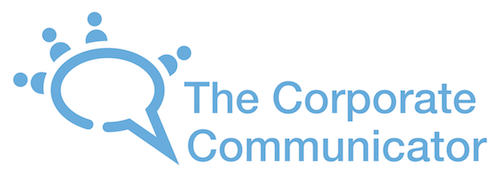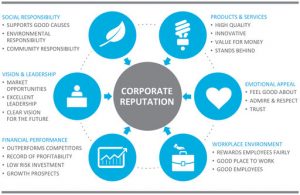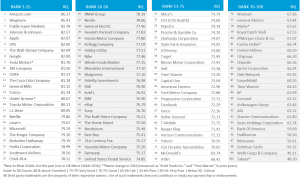I have covered various measures for corporate reputation in previous blog posts. Today I want to introduce another – quite different – quantitative approach:
Since 1999, Harris Poll Reputation Quotient research has evaluated public perceptions across 20 attributes, classified into six dimensions of corporate reputation. According to Harris, this allows them to reliably trend performance over time and identify industry and company specific drivers of corporate reputation.
The data is collected in a fairly complicated process: During a Nominations Phase, Harris identifies the companies with the most “visible” reputations by surveying more than 4000 US adults (representative for the US General Public). All respondents are asked to name companies that stand out as having the best and worst reputations overall. The result is a list of the “top 100” companies. Subsequently, during the Ratings Phase a more detailed online survey is conducted online in English and takes place among the general public, adults 18+. Respondents are randomly assigned to rate two of the companies with which they are “very” or “somewhat” familiar. Every interviews then takes about 20 minutes and the Reputation Quotient (RQ) of each company is based on about 300 interviews.(meaning that in November/December 2016 23,633 U.S. adults had to be interviewed).
The result is impressive. The company has an impressively detailed understanding of every company’s reputation and is actually able to spot long-time trends in general but also individual aspects of reputation.
Read more about the methodology and the current ranking here.


